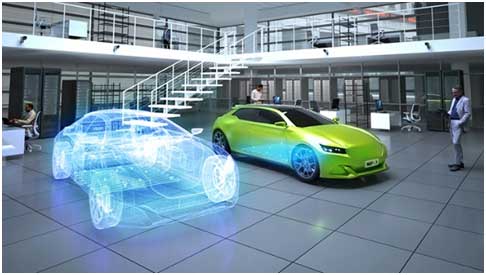-
Integrated Circuits (ICs)
-
Integrated Circuits (ICs)
- Audio Special Purpose
- Clock/Timing - Application Specific
- Clock/Timing - Clock Buffers, Drivers
- Clock/Timing - Clock Generators, PLLs, Frequency Synthesizers
- Clock/Timing - Delay Lines
- Clock/Timing - IC Batteries
- Clock/Timing - Programmable Timers and Oscillators
- Clock/Timing - Real Time Clocks
- Data Acquisition - ADCs/DACs - Special Purpose
- Data Acquisition - Analog Front End (AFE)
- Data Acquisition - Analog to Digital Converters (ADC)
- Data Acquisition - Digital Potentiometers
- Data Acquisition - Digital to Analog Converters (DAC)
-
Integrated Circuits (ICs)
-
Connectors, Interconnects
-
Connectors, Interconnects
- Backplane Connectors - ARINC Inserts
- Backplane Connectors - ARINC
- Backplane Connectors - Accessories
- Backplane Connectors - Contacts
- Backplane Connectors - DIN 41612
- Backplane Connectors - Hard Metric, Standard
- Backplane Connectors - Housings
- Backplane Connectors - Specialized
- Banana and Tip Connectors - Accessories
- Banana and Tip Connectors - Adapters
- Banana and Tip Connectors - Binding Posts
- Banana and Tip Connectors - Jacks, Plugs
- Barrel - Accessories
-
Connectors, Interconnects
- Resistors
-
Capacitors
-
Capacitors
- Accessories
- Aluminum - Polymer Capacitors
- Aluminum Electrolytic Capacitors
- Capacitor Networks, Arrays
- Ceramic Capacitors
- Electric Double Layer Capacitors (EDLC), Supercapacitors
- Film Capacitors
- Mica and PTFE Capacitors
- Niobium Oxide Capacitors
- Silicon Capacitors
- Tantalum - Polymer Capacitors
- Tantalum Capacitors
- Thin Film Capacitors
-
Capacitors
- Crystals, Oscillators, Resonators
-
Cable Assemblies
-
Cable Assemblies
- Barrel - Audio Cables
- Barrel - Power Cables
- Between Series Adapter Cables
- Circular Cable Assemblies
- Coaxial Cables (RF)
- D-Shaped, Centronics Cables
- D-Sub Cables
- Fiber Optic Cables
- Firewire Cables (IEEE 1394)
- Flat Flex Jumpers, Cables (FFC, FPC)
- Flat Flex Ribbon Jumpers, Cables
- Jumper Wires, Pre-Crimped Leads
- LGH Cables
-
Cable Assemblies
- Power Supplies - Board Mount
-
Switches
-
Switches
- Accessories - Boots, Seals
- Accessories - Caps
- Accessories
- Cable Pull Switches
- Configurable Switch Components - Body
- Configurable Switch Components - Contact Block
- Configurable Switch Components - Illumination Source
- Configurable Switch Components - Lens
- DIP Switches
- Disconnect Switch Components
- Keylock Switches
- Keypad Switches
- Magnetic, Reed Switches
-
Switches
- Circuit Protection
-
Discrete Semiconductor Products
-
Discrete Semiconductor Products
- Diodes - Bridge Rectifiers
- Diodes - RF
- Diodes - Rectifiers - Arrays
- Diodes - Rectifiers - Single
- Diodes - Variable Capacitance (Varicaps, Varactors)
- Diodes - Zener - Arrays
- Diodes - Zener - Single
- Power Driver Modules
- Thyristors - DIACs, SIDACs
- Thyristors - SCRs - Modules
- Thyristors - SCRs
- Thyristors - TRIACs
- Transistors - Bipolar (BJT) - Arrays
-
Discrete Semiconductor Products
-
Optoelectronics
-
Optoelectronics
- Accessories
- Ballasts, Inverters
- Display Bezels, Lenses
- Display Modules - LCD, OLED Character and Numeric
- Display Modules - LCD, OLED, Graphic
- Display Modules - LED Character and Numeric
- Display Modules - LED Dot Matrix and Cluster
- Display Modules - Vacuum Fluorescent (VFD)
- Display, Monitor - LCD Driver/Controller
- Electroluminescent
- Fiber Optics - Attenuators
- Fiber Optics - Receivers
- Fiber Optics - Switches, Multiplexers, Demultiplexers
-
Optoelectronics
Cloud-connected battery management system for electric vehicles powered by AI
AI-driven battery management system digital twin cloud-based model can improve electric vehicle battery range, energy efficiency, safety and service life, and heralds the emergence of many new applications
NXP Semiconductors N.V. (Nasdaq: NXPI ) announced a newly developed solution to connect its high-voltage battery management system (HVBMS) to the cloud through the S32G GoldBox automotive network reference AI) driven battery digital twin model. NXP uses EVE-Ai™ 360-degree adaptive control technology from Electra Vehicles, Inc to stimulate the potential advantages of cloud-based digital twin models to achieve better real-time prediction and management of physical BMS, improve battery performance, and improve battery health (up to 12% ), and supports several new applications such as electric vehicle fleet management. NXP will demonstrate the solution at this year's electronica in Munich.
product importance
Batteries are still the most expensive component in electric vehicles (EVs), and AI-driven digital twin cloud services have huge potential benefits to improve battery state-of-health (SOH) and state-of-charge (SOC) estimation, thereby improving energy efficiency and extending battery life. Longer service life and lower costs. Changes in operating conditions may lead to continuous changes in the state of health of the battery. The battery digital twin model can adapt to this continuous change and feed back data updates to the BMS, thereby continuously improving control decisions.
Automakers can use the technology to provide driver analytics, such as remaining mileage or speed recommendations. In addition, adaptive battery control can improve battery performance and safely extend its life, reducing warranty costs for car manufacturers. Another potential application of the technology is electric vehicle fleet management, which can provide fleet operators with important usage analytics, such as vehicle charging times and battery predictive diagnostics. Furthermore, with this in-depth information, battery maintenance centers can achieve fast diagnosis and reduce downtime, and EV charging station operators can effectively optimize charging services and improve energy efficiency.
As the electric vehicle market continues to grow, the supply of reusable batteries will also expand. These batteries have reached the end of their life as car batteries, but have an astounding 80% remaining capacity. If the remaining battery life (RUL) in an energy storage system (ESS) can be used in the home, the homeowner's energy bills can be expected to decrease.

